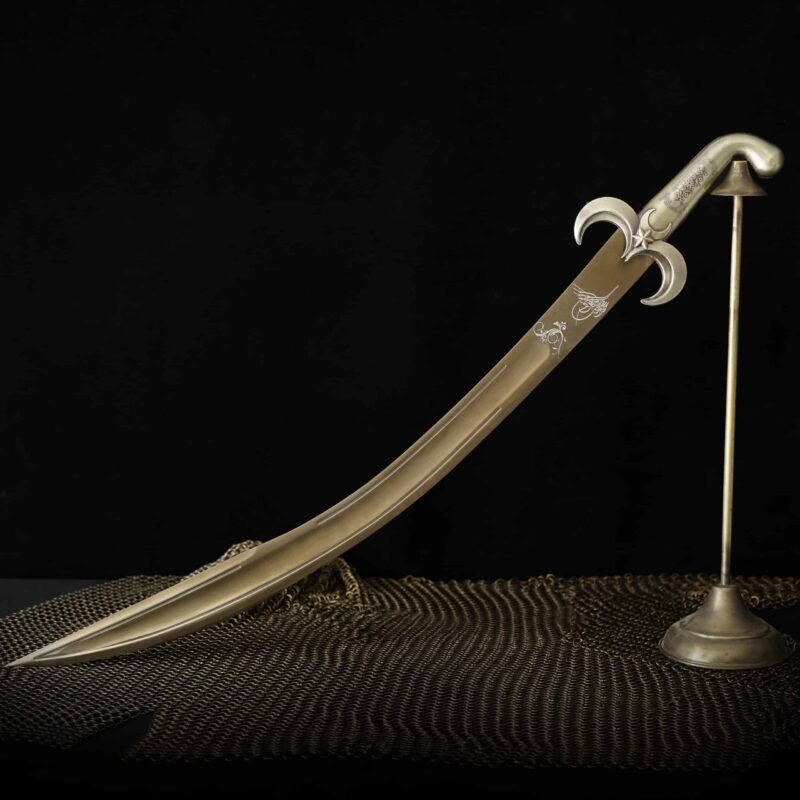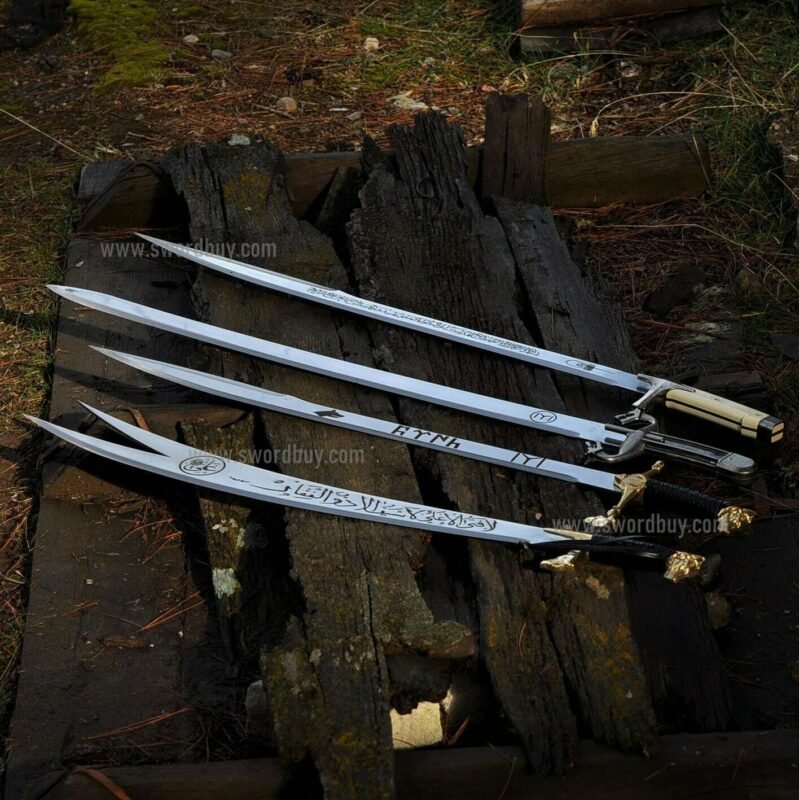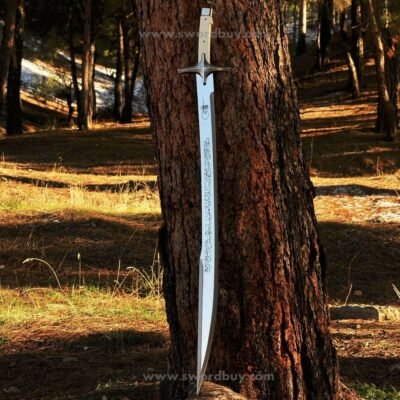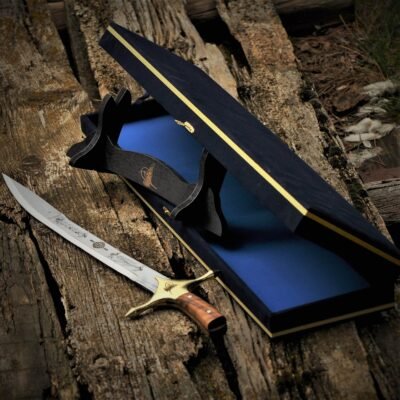Ottoman Swords: A Fascinating Legacy of Power and Craftsmanship
The Ottoman Empire, one of history’s most powerful empires, left an indelible mark on the world. A symbol of its might and dominance is the Ottoman sword, a weapon that not only represented military prowess but also embodied the rich culture and artistry of the empire. Ottoman swords are an extraordinary blend of craftsmanship, technological innovation, and a storied history that spanned several centuries. In this article, we will explore the types, significance, and legacy of Ottoman swords, delving deep into their role in shaping the empire’s military and cultural heritage.
The Role of Swords in the Ottoman Empire
The Ottoman Empire, stretching across three continents at its height, relied heavily on its military for expansion and defense. Among the many weapons that defined Ottoman warfare, the sword stood out for its symbolism and practicality. For the Ottomans, swords were not only instruments of battle but also representations of authority, honor, and skill. To be an Ottoman warrior meant mastering the art of the sword, a weapon that was essential in both cavalry and infantry combat.
Swords in the Ottoman military were also symbols of status, often lavishly adorned and presented as gifts to officers and dignitaries. The quality of a sword could indicate the rank of its bearer, making it a prized possession beyond the battlefield.
Types of Ottoman Swords
The Ottomans were known for crafting various types of swords, each designed for specific uses and reflecting influences from different cultures. The most famous and iconic of these swords are the Kilij, Yatagan, and Shamshir.
1. Kilij
The Kilij is perhaps the most recognized Ottoman sword and one of the defining symbols of the Ottoman military. It is characterized by its curved blade, which widens towards the tip, creating an efficient cutting edge. The Kilij’s unique shape allowed for powerful slashing attacks while maintaining balance and control in combat. This sword was particularly favored by cavalry units, as its design made it ideal for swift, mounted attacks.
The Kilij has roots in Central Asia, drawing influence from earlier Turkish and Mongol blades, but it evolved into a distinct Ottoman weapon during the 15th century. Over time, the Kilij became a symbol of Ottoman military power and was often used ceremonially, carried by high-ranking officials and sultans.
2. Yatagan
The Yatagan is another significant Ottoman sword, known for its distinctive double-curved blade and lack of a guard. It was commonly used by infantry soldiers, especially during the 16th to 19th centuries. The Yatagan’s design made it a versatile weapon for both close combat and cutting, and its lightweight construction allowed for quick, precise strikes.
Unlike the Kilij, the Yatagan was often carried by regular soldiers, though it was also popular among the Janissaries, the elite Ottoman infantry corps. The sword’s hilt, often made from bone or ivory, was highly decorative, featuring intricate designs that showcased the artistry of Ottoman craftsmen.
3. Shamshir
The Shamshir is a Persian-influenced sword that also became prominent in the Ottoman Empire. Its deeply curved blade was designed for slicing, and its sharp edge allowed for clean, devastating cuts. While the Shamshir shares some similarities with the Kilij, its thinner, more pronounced curve sets it apart.
This sword was especially popular among the Ottoman cavalry, as its curved shape was perfect for cutting through enemy lines while mounted. The Shamshir’s elegance and effectiveness made it a favorite among noblemen and high-ranking military officers.
The Craftsmanship of Ottoman Swords
Ottoman swords were not just tools of war; they were works of art. The craftsmanship involved in making these swords reflected the expertise and meticulous attention to detail that Ottoman blacksmiths were famous for. The process of forging an Ottoman sword was intricate, requiring a combination of high-quality steel and sophisticated techniques.
1. Blade Construction
Ottoman swordsmiths often employed Damascus steel, a material known for its strength and durability. Damascus steel was created by folding and forging layers of steel together, resulting in a blade that was both flexible and strong. The distinctive wavy patterns on the blade were a hallmark of Damascus steel, giving Ottoman swords their characteristic appearance.
In addition to their practicality, the blades of Ottoman swords were often adorned with inscriptions and decorations. Quranic verses, invocations to Allah, and the names of sultans or high-ranking officials were commonly engraved on the swords, imbuing them with a spiritual significance and linking them to the divine protection of the empire.
2. Hilt Design
The hilts of Ottoman swords were equally impressive in terms of craftsmanship. They were often made from precious materials such as ivory, silver, and gold, with intricate inlays and carvings. The hilt’s design was not only functional, providing a secure grip, but also served as a display of wealth and status.
The cross-guard, or lack thereof in some cases, also played an important role in the design of Ottoman swords. For example, the absence of a guard on the Yatagan gave it a more streamlined appearance, while the large, protective cross-guards of other swords like the Kilij were designed for additional hand protection during combat.
Symbolism and Legacy of Ottoman Swords
Ottoman swords were much more than battlefield tools; they were symbols of power, authority, and culture. Sultans and high-ranking officials often wore ornate swords as part of their ceremonial dress, signifying their leadership and military command. These swords were sometimes passed down through generations, serving as family heirlooms and a testament to the military history of the empire.
The craftsmanship of Ottoman swords also spread beyond the empire’s borders, influencing sword-making techniques in other parts of the world. Ottoman blades were highly prized by collectors and were often gifted to foreign dignitaries as a symbol of diplomacy and mutual respect.
Even today, Ottoman swords are revered as historical artifacts, representing the empire’s grandeur and military achievements. Collectors, historians, and enthusiasts of Ottoman culture continue to study these weapons, marveling at their intricate designs and historical significance.
Preserving the Legacy of Ottoman Swords
Many Ottoman swords have survived to the present day, housed in museums and private collections around the world. Institutions like the Topkapi Palace Museum in Istanbul showcase these swords, allowing visitors to appreciate their artistry and craftsmanship up close. Preservation efforts are critical in ensuring that future generations can continue to admire and study these symbols of the Ottoman Empire’s rich history.
For those interested in collecting Ottoman swords, authenticity and provenance are key factors. Genuine Ottoman swords are rare and highly sought after, making them valuable items in the world of antiques and historical weapons.
Conclusion
Ottoman swords are more than just weapons; they are a testament to the empire’s military prowess, cultural heritage, and artistic achievement. From the curved Kilij to the sleek Yatagan, each type of sword tells a story of the empire’s expansion, battles, and the craftsmanship that defined an era. These swords stand as enduring symbols of a time when the Ottoman Empire ruled vast territories and left a lasting imprint on history.





Pingback: Ottoman Swords: A Fascinating Legacy of Power – Types Of Swords
Pingback: Types of Swords - SwordBuy